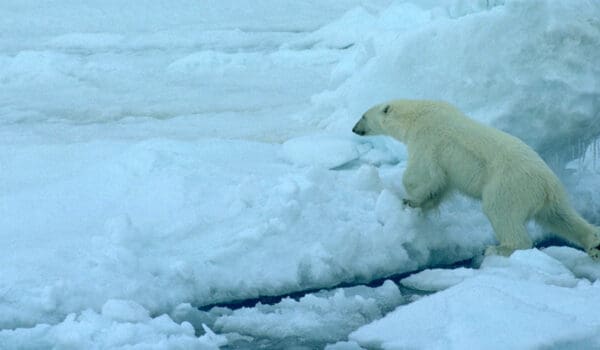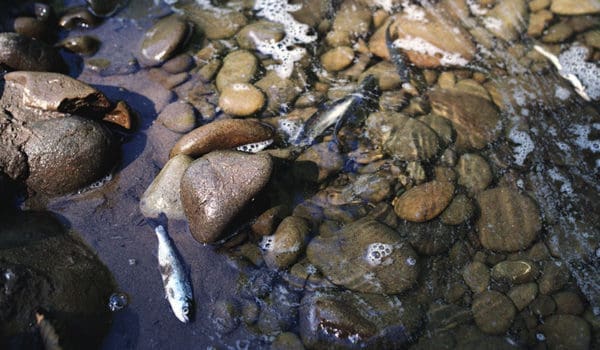During the first decade of the 21st century, focus on climate change research turned towards aerosols – tiny, solid particles or liquid droplets suspended in air or gas, that can remain suspended over long distances.
Aerosols are one of the factors that affect climate change, and climatologists would therefore like to find out more about them, and use the knowledge to perform more precise predictions for climate change.
Depending on their chemical composition and optical properties, aerosols can have both cooling and warming properties. In climate research context, they belong to the group SLCFs, “short-lived climate forcers”. These substances contribute to global warming, but only have a short lifetime in the atmosphere (from a matter of days to 15-20 years). In comparison, the “main” greenhouse gas CO2 can continue to warm up the atmosphere for hundreds of years after its emission.
Sea spray and volcanic ash
Particles have different origins, such as volcanic emissions (volcanic ash and sulphur particles), sea spray (sea salt particles), desert storms (mineral dust), forest fires (organic carbon and “black carbon”, soot), coal power plants (secondary sulphur particles and other particles from fossil sources), boats (soot, etc.) and cooking (soot and organic carbon).
NILU still has a number of different research activities aiming to increase the knowledge about how particles influence our climate. The institute is investigating (amongst other things) the chemical characteristics of aerosols, optical properties and their transport, dispersion and distribution mechanisms in the atmosphere. The latter is being investigated using models, such as FLEXPART and EMEP. Since 2010, NILU is also responsible for the «World Data Centre on Aerosols» under the World Meteorological Organisation (WMO), collecting monitoring data from observatories all over the world.
Important climate projects and activities at NILU in the 2000s
2000: The Zeppelin observatory at Svalbard is re-opened after reconstruction, and its measuring program is extended. A new instrument to measure replacement gasses for chlorofluorocarbon (CFC) and greenhouse gasses is installed.
2001: SFT appoints NILU as the national reference laboratory for air. The main tasks are to guarantee that monitoring data for air quality in Norway are comparable and have high quality.

2002: ESA (European Space Agency) sends ENVISAT-1 into orbit. The satellite contains, amongst other things, three different instruments to examine the atmosphere: MIPAS, GOMOS and SCIAMACHY. The satellite data are stored at the NADIR database. NILU is also responsible for coordinating the EU program “European Land-Ocean Interaction Studies” (ELOISE), which includes more than 50 projects – some of them with a focus on coastal zones and their role in relation to emission or absorption of different greenhouse gasses.
2003: NILU investigates, quantifies and simulates natural and anthropogenic climate variations and changes in the Arctic marine eco system in the Norwegian project MACESIZ (Marine Climate and Ecosystems in the Seasonal Ice Zone). One of the aims is to understand how snow cover at higher elevations influences climate patterns in wintertime. From 2003-2005, NILU also participates in 15 different EU-projects with focus on the carbon cycle’s effect on climate change.
2004: NILU starts measuring greenhouse gasses, UV-radiation, ozone, soot and different air pollutants at the new “Troll” observatory at Queen Maud Land in Antarctica. In the same year, the EU project ACCENT starts within the Sixth Framework Programme related to atmospheric research. NILU is responsible for the development of the project’s web portal and information and education activities.

2005: Queen Sonja performs the official opening of the Troll observatory in February, and from that time, NILU effectively carries out research “from pole to pole”. The institute also participates as a partner in the EU-project CARBOOCEAN, which aims to find out what happens with the ocean’s ability to absorb CO2 when CO2 emissions rise worldwide.
2007: Against the background of the third International Polar Year (IPY), two international workshops on short-lived climate drivers and climate changes in the Arctic take place – one at NASA in New York and one organized by NILU in Oslo. The workshop in Oslo concluded that methane emissions should be reduced, a strategy for the reduction of short-lived climate drivers in the Northern hemisphere should be implemented, and a strategy for the reduction of the “black carbon” amounts (BC/soot) in the Arctic environment put into place. During the same year, NILU scientists affirmed that biomass burning – e.g., through forest fires – is a major source for emission of the environmental pollutants PCBs in the Arctic.

2008: The IPY project POLARCAT, led by NILU and the French CNRS, uses aircraft, ships and observatories in a coordinated campaign to perform the most comprehensive assessment of air pollution effects on the Arctic. In addition, NILU measures the highest methane concentrations in the atmosphere over Svalbard to that date, with an increase of 0.6% in terms of concentration compared to 2006. The same year, scientists for the first time see a decrease in the levels of ozone-disrupting CFC gasses, which shows the effect of the Montreal protocol. Additionally, scientists from NILU, NINA, UiO, the National Institute for Public Health and NIVA are the first to investigate the potential consequences of new technologies using amines for CO2-capture.
2009: NILU scientists use the FLEXPART model to prove that particles detected at the Troll observatory in Antarctica originates from a forest fire in Brazil. During the same year, UNEP (the UN environmental program) starts developing a legal framework for the reduction of mercury emissions, with climate research from NILU as evidence. In addition, NILU is a partner in the new ArcRisk project, which examines how the health of people living in the Arctic is affected by climate-induced changes in the pollution cycle.




